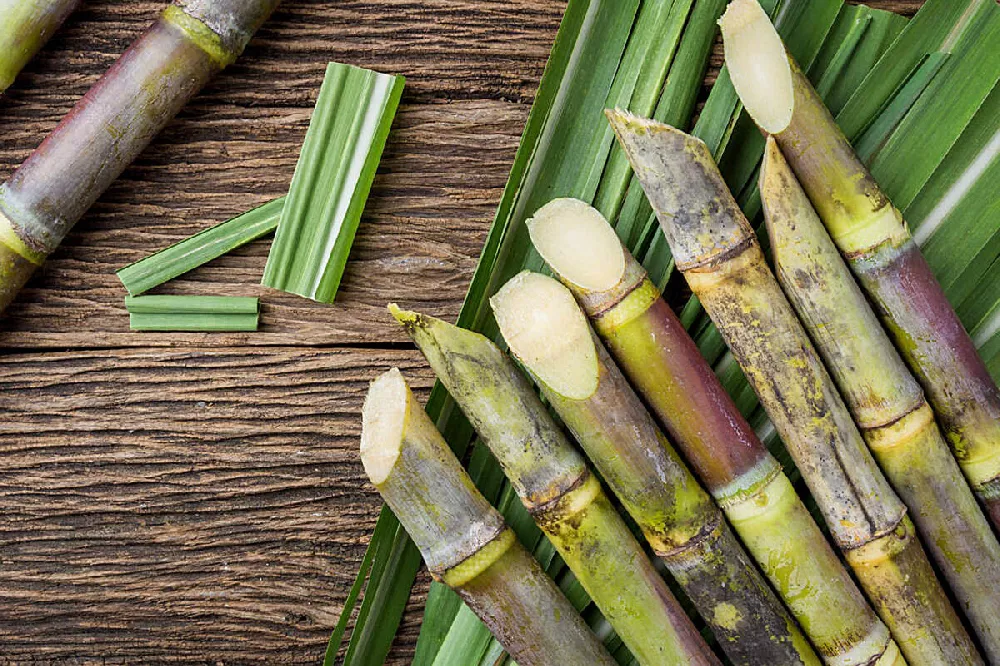A Thorough Overview to the Environmental Effect and Sustainability Practices in Cane Sugar Handling
The ecological influence of walking stick sugar processing provides a complicated range of obstacles that warrant cautious assessment. From soil deterioration and too much water usage to the carbon impact linked with growing and manufacturing, the consequences of standard practices are far-ranging. On the other hand, the adoption of ingenious sustainability procedures supplies a pathway towards extra responsible production techniques. Recognizing the interplay between these concerns is vital for stakeholders in the industry. What particular methods can be implemented to strike a balance between productivity and environmental stewardship? The solutions hinge on a closer take a look at both the difficulties and prospective options.
Summary of Walking Stick Sugar Processing
Cane sugar processing includes a series of systematic actions that change sugarcane into polished sugar. Originally, gathered sugarcane is moved to refining centers, where it goes through cleaning to remove dirt and debris. Following this, the cane is squashed to draw out juice, which is then made clear by getting rid of pollutants through home heating and the enhancement of lime.
The clarified juice undertakes dissipation, where water is removed to focus the sugar web content. This concentrated syrup is after that crystallized via air conditioning, allowing sugar crystals to create. These crystals are separated from the remaining syrup using centrifugation, causing raw sugar. To accomplish refined sugar, the raw item undergoes more purification procedures, which may include cleaning and filtering to remove staying impurities and color.
The end product is then dried out and packaged for circulation. Throughout this entire procedure, maintaining effectiveness and quality assurance is important to make sure the sugar meets sector requirements. Each action in walking stick sugar handling not just contributes to the final product however additionally has implications for source usage and waste generation, setting the stage for conversations on sustainability and ecological impacts connected with sugar production.
Ecological Difficulties of Manufacturing
The manufacturing of cane sugar provides a number of considerable ecological obstacles that warrant focus. One primary issue is the substantial use agrochemicals, including chemicals and fertilizers, which can cause dirt deterioration, biodiversity loss, and contamination of regional water sources. The overflow from sugarcane fields usually lugs these chemicals into neighboring communities, interrupting water life and affecting the health of communities reliant on these water bodies.
An additional obstacle is the high power usage connected with sugarcane processing. The boiling and refining stages require substantial warmth, largely created by melting fossil gas, adding to greenhouse gas discharges. Additionally, the expansive acreage required for sugarcane cultivation can bring about logging and habitat destruction, more worsening climate change and harmful wildlife.
Moreover, the labor methods in some regions elevate honest concerns, as employees may encounter bad working conditions and inadequate salaries. This situation often bolsters a cycle of poverty in neighborhood communities. Cane Sugar Processing. Resolving these ecological challenges is critical for creating much more lasting practices in walking stick sugar production, eventually benefiting both the atmosphere and the neighborhoods involved in this market
Water and Land Usage Impact
Water sources and land usage are essential elements in the cane sugar market that significantly affect the environment. The cultivation of sugarcane calls for substantial water input, with price quotes suggesting that it can take in approximately 2,000 liters of water per kg of sugar generated. This extensive use water usually results in exhaustion of neighborhood water resources, affecting not only the sugarcane vineyards yet also surrounding ecological communities and areas that rely upon the very same water sources for agriculture and domestic use.

Additionally, land use for sugarcane growing can cause logging and the page conversion of all-natural environments into monoculture vineyards. This method reduces biodiversity, interferes with neighborhood ecological communities, and adds to dirt destruction. The development of sugarcane areas usually elbows in on beneficial farming land, developing competitors for resources between food and biofuel production.
Sustainable practices, such as optimizing watering strategies and carrying out plant rotation, are important to alleviate these effects. By embracing much more reliable water use and land administration techniques, the cane sugar sector can reduce its eco-friendly impact, making sure a balance in between agricultural productivity and ecological preservation.
Greenhouse Gas Emissions
Greenhouse gas emissions stand for a considerable ecological issue within the walking cane sugar handling industry, specifically as agricultural techniques expand to meet international demand. The farming of sugarcane, a crop that flourishes in exotic environments, depends greatly on synthetic plant foods and pesticides, which add to nitrous oxide exhausts. Furthermore, land-use adjustments, including logging for new sugarcane see this site vineyards, release co2 saved in vegetation and dirt.
Throughout handling, power consumption is another major source of greenhouse gas emissions - Cane Sugar Processing. Numerous sugar mills utilize nonrenewable fuel sources to power machinery and generate heat, resulting in considerable carbon footprints. Additionally, the transportation of raw sugarcane and completed products adds layers of emissions via gas burning in automobiles
The collective result of these exhausts worsens environment modification, presenting dangers not only to the environment but also to the lasting stability of the sector. Stakeholders need to acknowledge the urgent need for extensive techniques that deal with these emissions. This entails evaluating existing farming methods, processing approaches, and transport systems to determine locations for enhancement and mitigation. Attending to greenhouse gas emissions is important for cultivating a much more sustainable walking cane sugar market in a changing environment.

Lasting Practices and Innovations
Lasting practices and find more info technologies are progressively essential in the walking stick sugar handling industry as stakeholders seek to lower environmental effects while keeping productivity. One considerable advancement is the implementation of incorporated plant management, which enhances source usage by incorporating soil management, bug control, and plant turning techniques. This method improves return while reducing chemical inputs and maintaining dirt health.
Furthermore, the adoption of eco-friendly energy sources, such as biomass from sugarcane residues, has obtained traction - Cane Sugar Processing. By converting waste products into energy, processing centers can lower their reliance on fossil fuels, thereby reducing greenhouse gas discharges
Water monitoring techniques have additionally seen improvements with the recycling and reusing of water in handling plants, significantly reducing freshwater consumption. Developments in modern technology, such as precision agriculture, enable farmers to keep an eye on crop health and wellness and resource usage better, guaranteeing sustainable farming techniques.
Moreover, qualification programs like Fair Profession and Jungle Alliance encourage environmentally liable farming techniques and promote social equity within the supply chain. By embracing these lasting techniques and technologies, the walking cane sugar handling market can boost its strength and contribute positively to ecological stewardship.
Final Thought
The environmental influence of walking stick sugar processing offers considerable challenges, consisting of soil degradation, high water usage, and greenhouse gas emissions, along with honest issues connected to labor techniques. Attending to these issues via lasting practices, such as incorporated crop management, sustainable energy fostering, and water recycling, is vital. By promoting eco accountable and socially fair techniques in sugar production, the sector can mitigate its negative results, guaranteeing an extra sustainable future for both ecosystems and neighborhoods entailed in this industry.
Walking stick sugar handling entails a series of methodical steps that change sugarcane right into refined sugar. Each step in walking stick sugar handling not just contributes to the final product yet additionally has implications for resource use and waste generation, establishing the phase for conversations on sustainability and environmental impacts connected with sugar manufacturing.
Greenhouse gas exhausts represent a considerable environmental problem within the cane sugar processing market, especially as farming techniques broaden to satisfy worldwide need.Lasting techniques and technologies are increasingly vital in the cane sugar processing industry as stakeholders seek to reduce environmental influences while preserving performance.The ecological effect of walking stick sugar processing presents significant challenges, consisting of dirt destruction, high water usage, and greenhouse gas discharges, together with honest problems related to labor methods.